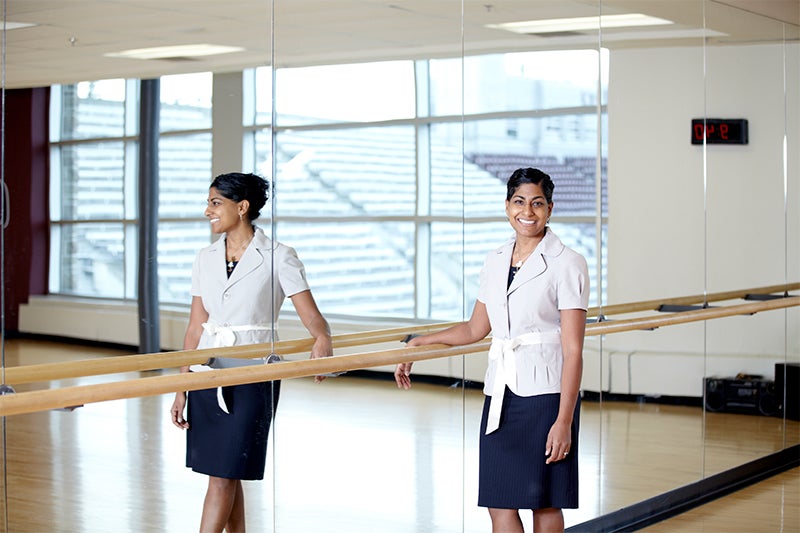University Research Chair

Contact information
Office: BMH 1114
Phone: (519) 888-4567, ext. 47916
Email: mrmaly@uwaterloo.ca
Website: Mobilize Clinical Biomechanics Lab
Research interests
My research program focuses on developing biomechanically-sound physical activity guidelines for adults with the most common forms of arthritis that are associated with aging. Promoting physical activity is paramount to the well-being of Canadian adults as they age - exercise provides as much pain relief for arthritic pain as drugs, while also reducing the risk for co-morbidities including cardiovascular disease and cancer. However, excessive physical activity, due to work or recreation, can promote joint damage. Canadians with arthritis have no guidance on the amount, type or intensity of physical activity that damages joints. I use biomechanical methods to evaluate the impact of physical activity on joint health, with an aim to develop guidelines for physical activity that promote health and productivity, while minimizing the risk for arthritis progression.
Graduate supervision and student opportunities
- Research volunteer
- Undergraduate thesis
- MSc thesis
- Coursework interns
- PhD thesis
- Postdoctoral fellowship
- Research assistant/coordinator
Please email to discuss current available opportunities.
Graduate studies application details
Teaching, expertise, tools and technologies
Expertise:
- Knee biomechanics
- Osteoarthritis
- Clinical outcomes
- Mobility
- Exercise
- Muscle
- Imaging and disability
Teaching approaches include:
- Problem-based
- Case-based
- Team-based
Education
BSc (PT), Queen's University
MSc, Queen's University
PhD, Queen's University
PDF, University of Toronto
Selected publications
See Google Scholar and PubMed for full list of publications
Chopp-Hurley, J.N.*, Brenneman, E.C.*, Wiebenga, E.*, Bulbrook, B.*, Keir, P.J., Maly, M.R. (Accepted). A randomized controlled trial investigating the role of exercise in the workplace to improve work ability, performance and patient-reported symptoms among older workers with osteoarthritis. Journal of Occupational and Environmental Medicine.
Brisson, N.,*, Wiebenga, E.*, Stratford, P.W., Beattie, K.A., Totterman, S., Tamez-Pena, J., Callaghan, J.P., Adachi, J.D., Maly, M.R. (In press). Baseline knee adduction moment peak and impulse interact with body mass index to predict loss of medial tibial cartilage volume over 2.5 years in knee osteoarthritis. Journal of Orthopaedic Research.
Gatti, A.A.,*, Noseworthy, M.D., Stratford, P.W., Brenneman, E.C.*, Totterman, S., Tamez-Pena, J., Maly, M.R. (2017). Acute changes in knee cartilage transverse relaxation time after running and bicycling. Journal of Biomechanics. 53, 171-177.
Brenneman E.C.*, Kuntz A.B.*, Wiebenga, E.G.*, Maly M.R. (2016). Does pain relate with activation of quadriceps and hamstrings muscles during strengthening exercise in people with knee osteoarthritis SpringerPlus. 5, 463. doi: 10.1186/s40064-016-2048-1.
Gatti, A.*, Stratford, P.W., Brenneman, E.C.*, Maly, M.R. (2016). GTX3+ accelerometer placement affects the reliability of step-counts measured during running and pedal-revolution count during bicycling. Journal of Sport Sciences. 34, 1168-1175.
Brenneman E.C.*, Kuntz A.B.*, Wiebenga, E.G.*, Maly M.R. (2015). A yoga strengthening program designed to minimize the knee adduction moment in women with knee osteoarthritis: A proof of principle cohort study. PLOS ONE. 14, 10.
Maly M.R., Acker S.M.*, Totterman S., Tamez-Pena J.G. Stratford P.W., Callaghan J.P., Adachi J.D., Beattie K.A. (2015). Knee adduction moment relates to medial femoral and tibial cartilage morphology in clinical knee osteoarthritis. Journal of Biomechanics. 48, 3495-3501.